Travel: Florence, Italy. Jan 13/2023
- Lili Naveh
- Jan 13, 2023
- 6 min read
Continuation of a trip which started on Jan 12th (part 1)
Lior Aviv is a sweet-heart Israeli Tour Guide, recommended by my dear friend Nurit. Lior has been residing and tour-guiding in Florence for the past 10 years, and we were lucky to book him at a last minute notice, for a 3 hours tour of mainly the Uffizi Gallery.

liorinfirenze@gmail.com, +39. 329 815 9160
Samples of guided tours and lectures
Educated as an art historian, lecturer and authorized guide, Lior who met and walked us from our hotel via the famous Signoria Square
Piazza della Signoria Square

The central square in front of the impressive 14th C Palazzo Vecchio with its crenellated tower, was named after the Palazzo della Signoria, which is also the Palazzo Vecchio, and has been he main point of the origin and history of the Florentine Republic, and the gateway to Uffizi Gallery and Loggia della Signoria,

Palazzo Vecchio - Town Hall/Museum (Old Palace)
The city's massive, Romanesque, crenellated fortress-palace - town hall , now also a museum, overlooking the square with its copy of Michelangelo's David statue as well the gallery of statues


Next to the Palace:
Loggia della Signoria, /Loggia dei Lanzi - Gallery of Statues
A stone open-air sculpture corridor/wide gallery within 3 bays arches adjoining the Uffizi Gallery, and open to the street, built in the second half of the 14th which used to host in the past public meetings and ceremonies, later transformed to host antique and Renaissance art - several bronze and marble statues such as:
Perseus by Benvenuto Cellini, the Rape of the Sabine Women by Giambologna,
the he Medici lions. by Flaminio Vacca and Giovanni di Scherano Fancelli and
the Rape of Polyxena by Pio Fedi.
Other statues on the Piazza


The Fountain of Neptune is a famous, huge fountain built by Bartolomeo Ammannati and his assistants between 1563 and 1565; also known as “Il Biancone” (The White Giant), it was meant to be an allusion to Florence's dominion over the sea.

A copy of Michelangelo's David (the master copy is kept in the Accademia Gallery), a Marzocco sculpted by Donatello (the original is housed in the Bargello), Hercules and Cacus by Baccio Bandinelli .
A bronze representing Cosimo I on horseback by Giambologna.(under constructions the rider is off the horse)

Other Buildings at the Piazza

The Tribunale della Mercanzia - dates back to 1359; and formerly a courthouse for trials between merchants, houses now the
Gucci Museum and signature Garden store.
The current (temporary changing exhibit) we visited, was quite disappointing, as was the store

Palazzo Uguccioni Renaissance palace built in 1549 and has been attributed to Michelangelo, Bartolomeo Ammannati and Raphael; it offers now elegant apartments
And a Cafe on the street level.
Off the Piazza della Signoria, we eagerly proceeded to :

This most popular and important museum in Florence, was designed by Giorgio Vasari and was originally designated as an office space for the Medici family's work force,
It now displays under its roof an incalculable. work of art which includes masterpieces by Michelangelo, Sandro Botticelli, Leonardo da Vinci, Raphael, Caravaggio, Artemisia Gentileschi, Tiziano and many others.
Prior to gliding throughout the Ufizzi's many loaded art galleries ,Lior made sure to shorty brief us and bring us up to date, on the essential characteristics and order of the
7 eras in Art Development:

Ancient Greece and Rome (here) - 5thBC to 5th AD
The Middle Ages (here)- 5th C to 15th C
Italian Renaissance (here) - 15 c-16c
Mannerism (here) -1520- 1600
Baroque (here) - 1600 - 1750
Neo Classical and Romantic art (here) - mid 16th C -mid 19th C
Modern Art - (here) mid 19th C and the 20thC
At the Corridors of the Ufizzzi
A sample of what was seen
Filpo Lipi -Madonna and Child Botticelli - Madonna&Pomegranate Da Vinci - Magi
Boticcelli Primavera


Annunciation - Leonardo da Vinci (1416)
it is among the best known portrayals of the Annunciation in Christian art.

The Annunciation theme a popular biblical subject in 15th-c Florence. and is still a favorite one on Florence's the art stage and churches.
Verocchio - Baptism Michaelangelo - Holly Family Raphael- Madonna&Child
Tiziano - Venus of Urbino

Rembrandt -Old Man Raphael - Strozi Couple Rubens - Isabella Harandi
Caravaggio- The Sacrifice of Isaac
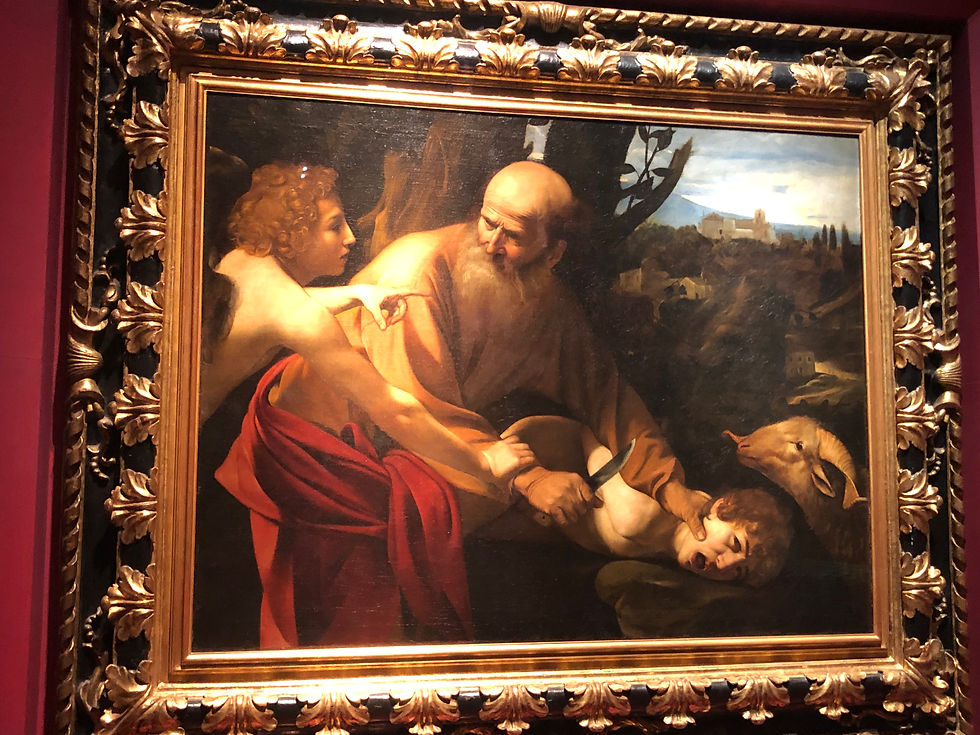
Tintoretto - The Sacrifice of Isaac

The views from the Ufizzi Galeries
At the end of spectating the museum's highlights, we joined Lior for lunch at his favorite lunch place
Just next to the restaurant, long lines of people mobbed these popular street food place

All" antico Vinaio _ Best Sandwiches places 3 stands next to each other
Once sadly departing from Lior and his many essential touring suggestions, Edna and I freely roamed the city's center streets, on our own, the rest of the afternoon.
Places passed–by/visited:

Museum Palazzo Strozzi
The grand palace, now a museum, was built in 1489[by Benedetto da Maiano, for Filippo Strozzi the Elder, a rival of the Medici. Filippo Strozzi died in 1491, long before the construction's completion, so in 1538. Duke Cosimo I de' Medici confiscated it in the same year, not returning it to the Strozzi family until thirty years later.
It is worth to view the external structure and step into the entrance floor, or visit the changing exhibits if interest, though
great changes were made to the building when the Istituto Nazionale delle Assicurazioni occupied Palazzo Strozzi.
The current Exhibit showcased Olafur Elliasson- Icelandic-Denish artist
"Weather Project" which we decided to pass.
Piazza della Repubblica - Square

A charming city center current square, is an open Piazza dates back to the 19th-c a clearing of the Mercato Vecchio, However it was originally the site of the city's forum; then of its old ghetto, which was swept away during the improvement works, or Risanamento,
Colonna dell'Abbondanza - Column of Abundance

The exact site of the gray granite Colonna dell'Abbondanza erected in the 15th c is the ancient midpoint intersection of the axes of the Roman grid roads ,of the cardo (now via Roma and via Calimala) and decumanus (now via degli Strozzi, via degli Speziali, and via del Corso)
originally a pietra serena statue by Donatello, depicting an allegory of la Dovizia (Abundance), holding a cornucopia, a theme befitting the surrounding marketplace. was placed on the column. However the head of Donatello's statue fell and was destroyed, the statue was removed in 1721, and replaced by a marble "Abundance statue" by Giovanni Battista Foggini
Attached to the column were 2 chains: one rung the open and close of market, while the other was used to chain swindlers and insolvent debtors for public shaming
The Merry-G0-Around on the Square

Cafes on the Square

Giubbe Rosse- Red jackets/ coats Cafe
The square's Giubbe Rosse cafe a historical literary café which opened in 1896, has long been a meeting place for famous artists and writers, notably those of Futurism.
Cafe Gilli
Of the other cafà©s lining the piazza, the most notable is Caffà© Gilli (founded in 1733)
It has wonderful pasteurizes we made sure to taste though pricey.
As good pastries if not more, I suggest to sample at the very near by
Iginio Massari Patisserie (here)
Not even 5 minutes walk further away from the Piazza della Repubblica , the "Jewel in the Crown " in the heart of the historic center of Florence, reveals itself in all its magnanimous splendor. It is one of the most visited places in Europe and the world

Piazza del Duomo - Cathedral Square

On the Square:
with the Cupola del Brunelleschi, - famous dome. The largest building in medieval Europe.and under it a crypt
Giotto's Campanile, -Gothic Bell Tower
Florence Baptistery of St. John,
Florentine Romanesque octagonal structure from the 11C
Conserves and houses great masterpieces of Michelangelo, Donatello, Lorenzo Ghiberti, Luca della Robbia, Arnolfo di Cambio and others
The Baptistery octagonal structure has 3 sets of artistically important bronze doors with relief sculptures curved into them
]Michelangelo dubbed the east doors "Gates of Paradise" for its 10 images. 2 are below
Tora Deliverance By Lorenzo Ghiberti. David and Golayat
The west zone of the Duomo square is called Piazza San Giovanni in which additional structures are worth a notice.

Loggia del Bigallo, - late Gothic arched building
Arcivescovile Palace - late 16th c rectory by Giovanni Antonio Dosio

Canonici's palace. built at the beginning of the 19th c with a facade characterized by 2 statues representing the architects of the Duomo.
Brunelleschi is still looking up at his work.
Statue by Luigi Pampaloni - 1830
Fresco by Domenico Domenico di Michelino - Three Kingdoms
scenes of Dantes Divine Comedy: the hell, the mountain of purgatory and the earthly paradise with Adam and Eve

Colossal clock face with fresco portraits of 4
Prophets or Evangelists by Paolo Uccello (1443).

Paolo Uccello (1443).


Opera del Duomo Museum -Museum of the Works of the Cathedral) (here)
Founded in 1891 to provide an educational platform to the places, original art work, and artists who gave life to the monumental complex of the Cathedral - ,the cradle of the Renaissance
Dinner
My dear friend Nurit recommended this small family own charming place, where we had a great meal.

Via dei Magazzini +39 055 293045

To be Continued.......







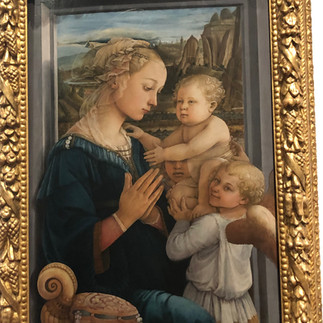

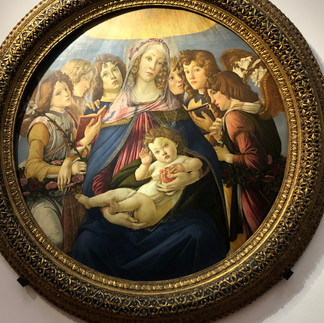





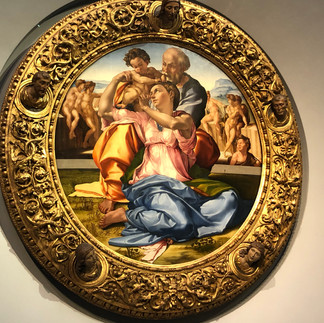
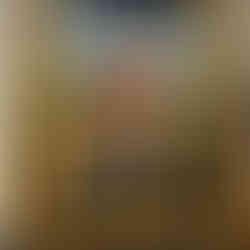


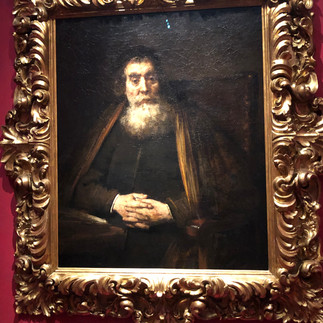








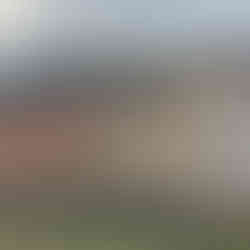




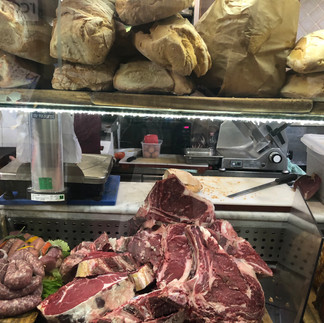





























Comments